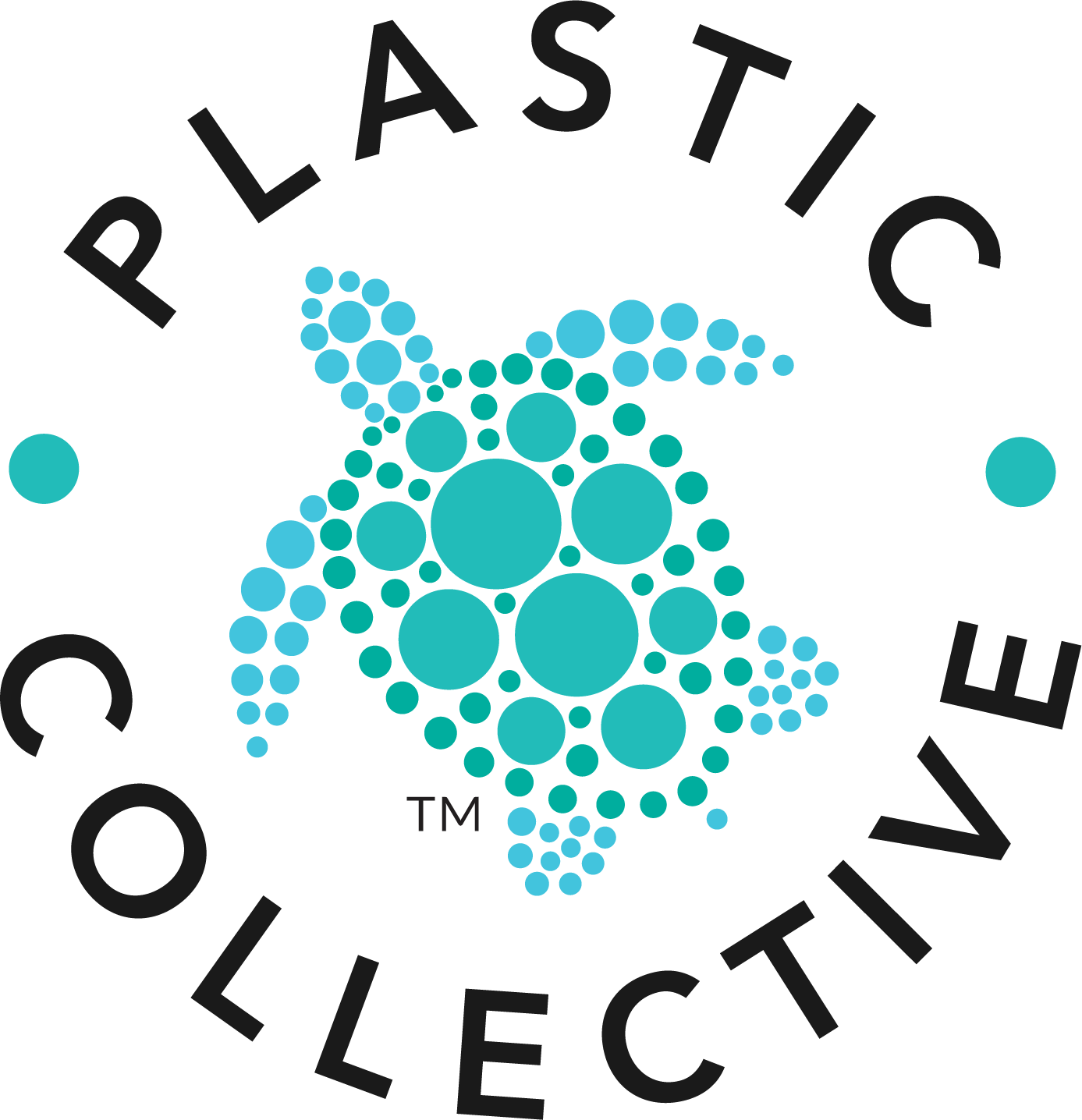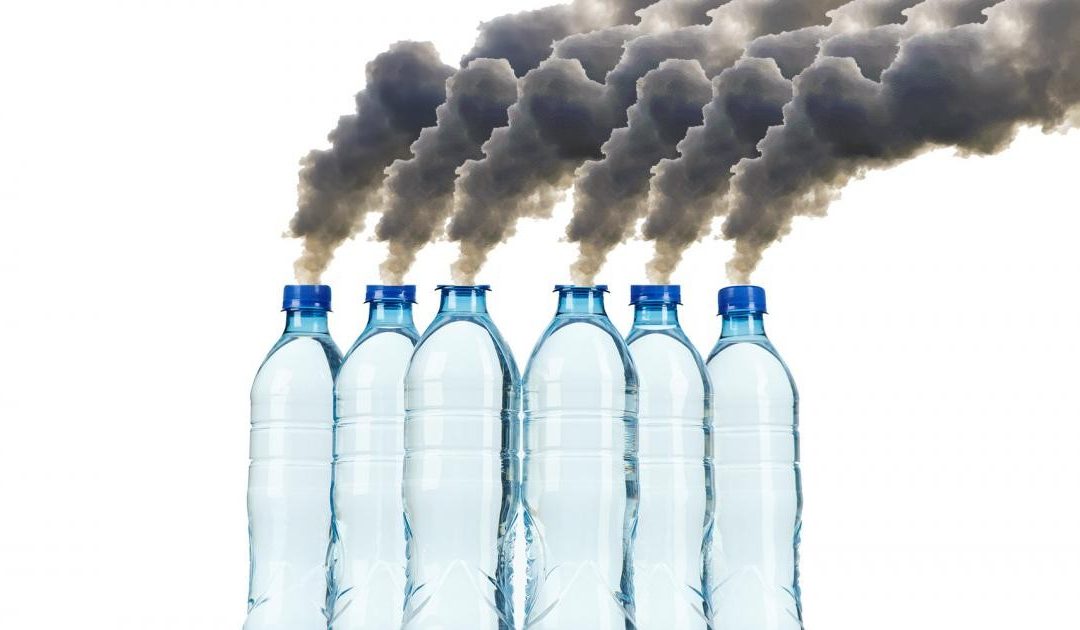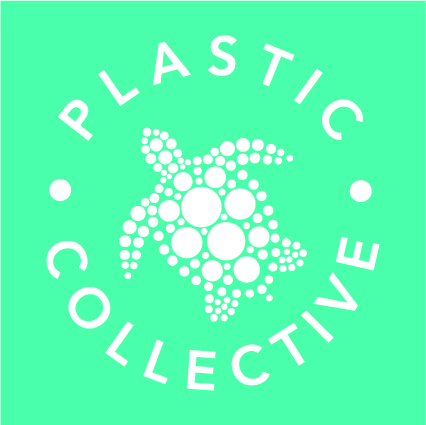Image sourced from GreenBiz
The perils of plastic are well known to businesses and their consumers. Yet, often at times the link between plastic pollution and carbon emissions is overlooked. Tackling these challenges requires a holistic understanding of their relationship.
We forget that our plastic beverages, take-out containers, cosmetics and so much more are synonymous with fossil fuels. Today, 99% of plastics in use are manufactured from either natural gas or crude oil. What does this mean for global warming? Our plastic is responsible for 3.8% of global greenhouse gas emissions – that’s almost double the emissions of the aviation sector!
The Center for International Environmental Law (CIEL) states that plastic exacerbates climate change at every stage of its lifecycle:
- Extraction and transportation
- Refining and manufacture
- Waste management
If the production and use of plastics continue to increase, the plastic industry will account for 20% of global oil use by 2050. Our carbon budget, however, needs to decrease through plastics recycling, the scaling of reusable products, etc. Addressing our plastic addiction is one piece to solving the climate crisis jigsaw, but how did we get here to begin with?
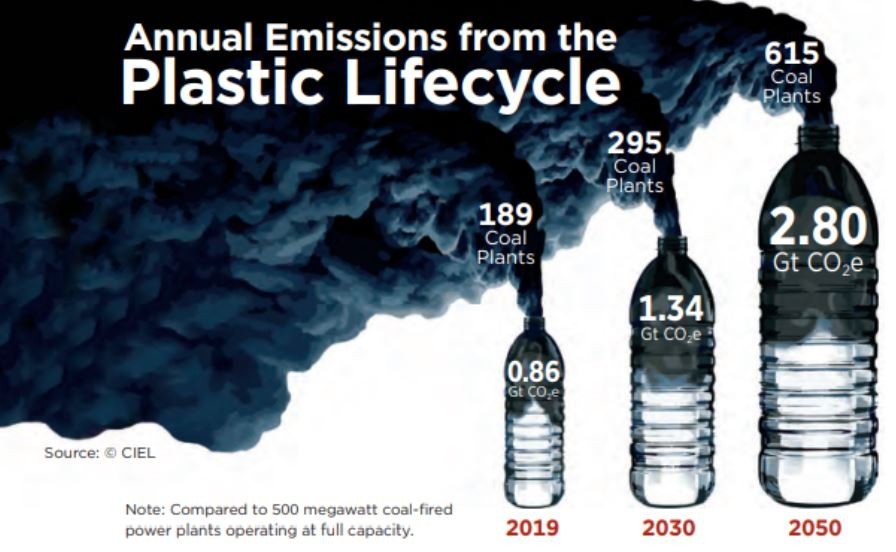
How did we get here?
Discovered in 1950, plastic production increased from 2.3 million tonnes to 381 million tonnes by 2015. This boom was a direct consequence of plastic’s cheap, durable and flexible nature which triggered global adoption. Culturally and economically seen as a low-value material, plastic is typically discarded rather than captured and turned into new goods.
Plastic production escalated so rapidly that our ability to recover, recoup and recycle the material cannot keep up. Shockingly, only 9% of the 8.3 billion metric tonnes of plastic ever created has been recycled. The rest gets incinerated or discarded into landfills creating negative environmental impacts like microplastics.
Developed countries like the US, UK and Japan rely on poorer countries to manage much of their discarded plastic. While China used to accept the majority of this discarded plastic, it shut its doors in 2018. Though countries like Turkey, Indonesia and Malaysia have become substitutes, the negative impact of plastic in their communities is forcing them to rethink the tons of plastic they accept.
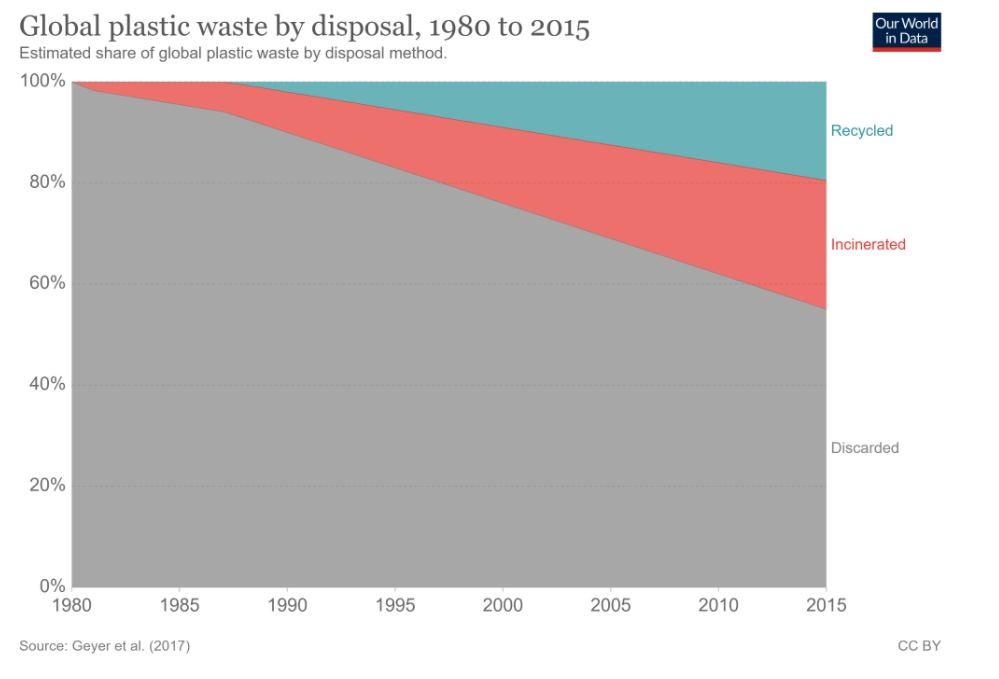
What does plastic waste and emissions in developing countries look like?
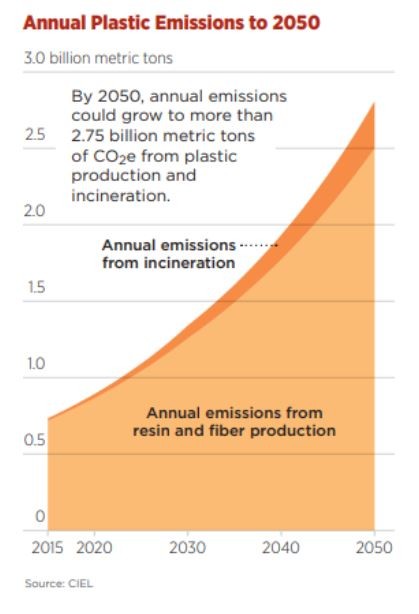
How has the COVID Pandemic impacted plastic use?
Global demand for plastic boomed alongside COVID-19. Single-use plastic masks and gloves have become an everyday necessity for doctors and civilians alike. Take-away from Deliveroo and UberEats also became a weekly norm. (Think about the climate impact of all the plastic packaging, straws and plastic bags!) Plastic has once again proven itself a necessity by helping to curb the spread of the pandemic. It is to be seen if this will jeopardize the policy initiatives in the US, France and elsewhere to curb plastic use and move towards circular models that reduce emissions while contributing to human health and ecosystems regeneration. Momentum, however, is growing for a United Nations Plastics Treaty.
What solutions exist?
Various solutions exist. We at Plastic Collective see three areas where brands can take climate action via plastic:
1. Set plastic targets in line with the Ellen MacArthur Foundation’s New Plastics Economy. Targets should sit within a long-term plastics strategy to reduce, reuse and recycle plastic.
2. Ensure your climate strategy is holistic by linking it to your plastics strategy. For example, if you already use Carbon Credits, consider Plastic-Carbon Combo Credits instead.
3. Become an impact activator by collaborating with a national or regional Plastics Pact. There are currently 12 around the world including the US, Europe, Chile and India.
Unsure how to start? Our engineers and sustainability consultants can help your company take its first steps, regardless of whether you are a recycler, a cosmetics company or in highly regulated industries like food and medical.
**************************************************************************************Our purpose at Plastic Collective is to show people how to find value in plastics as a resource, to understand which plastics can be recycled or recovered, and provide solutions to eliminate those which can’t be, thus preventing disposal of plastics. This will create sustainable circular economies which no longer rely on the ‘take-make-dispose’ attitude.
For more information, please contact us today.
